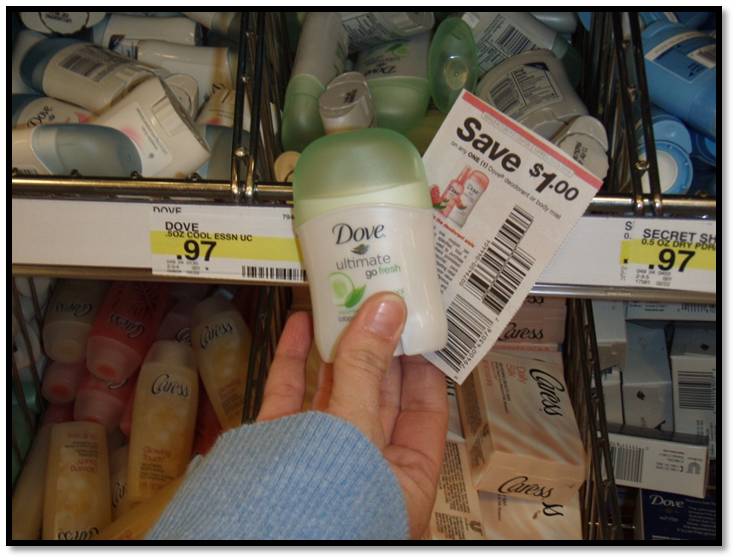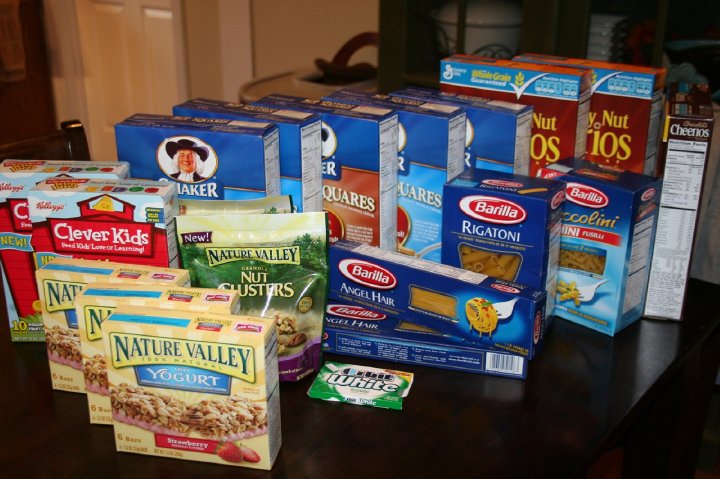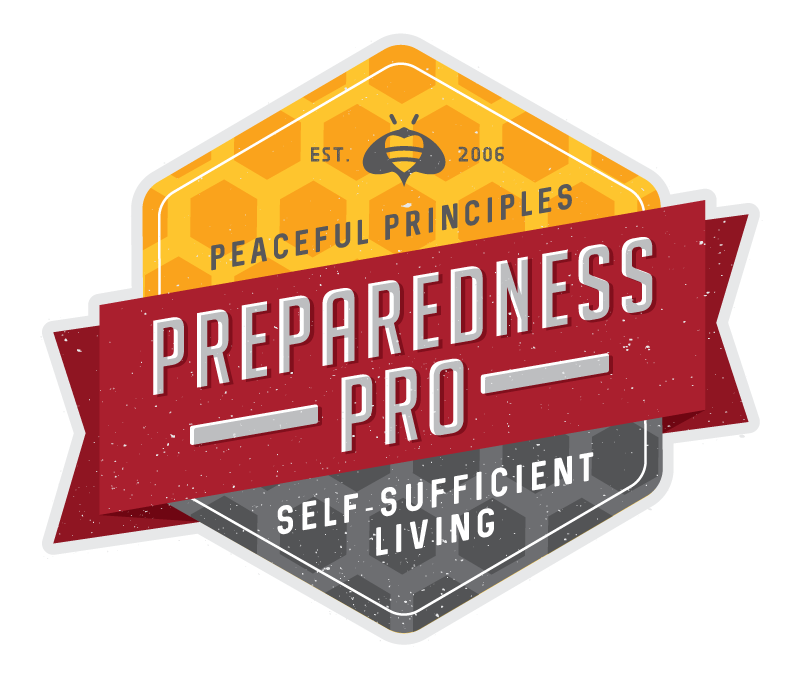by Kellene
 One of the things that I teach in our Coupon Training Boot Camp is about price points. A price point is essentially the price you’re willing to pay for a particular item. For example, when I first began using coupons, my acceptable price point for toothpaste and
One of the things that I teach in our Coupon Training Boot Camp is about price points. A price point is essentially the price you’re willing to pay for a particular item. For example, when I first began using coupons, my acceptable price point for toothpaste and
deodorant was $1.00. I stuck with that price point and I would not deviate from it regardless. I had to have faith in what I had initially been taught to believe that $1.00 for toothpaste and deodorant was realistic. But as I continued in my couponing efforts, there were many opportunities which came up in which I was able to obtain toothpaste and deodorant for about .40 cents each. As such, the .40 cents became my new benchmark for a price point, thus enabling me to get my money to work for me 60% harder. I have learned that once you are able to purchase an item at a particular price point, it’s very, very likely that it will come around again to that price. So when the items I wanted would go on sale, I would stock up on them and subsequently store them in one of my four gallon square buckets, labeled appropriately.
Nowadays, I never spend anything other than sales tax on items such as toothpaste, soap, shampoo, deodorant (except for one particular brand), dental floss, and candy. In other words FREE has become my new price point on several items. (In fact, FREE is the only price under which I allow myself to purchase candy nowadays—no matter how tempted or what kind of a mood I might possess.) I do this for two the following two reasons.
Your Personal Wall Street:
 When you’ve stocked up on a particular item, you don’t need to pay anything more for it than you’re best price point. For example, in spite of the fact that it was decades ago that .25 cents was the standard price of deodorant, it has still proven itself to be a realistic price point today as well. As I shared with you in the “Time Traveling with Coupons” article, the bloated advertising budgets of today will frequently manifest prices for items that even your great grandparents didn’t have on regular staple products. So the strategy is to stock up when you get a great deal only so long as it aligns with your set price points—and then you have the luxury of waiting to purchase again when the price is right. This means you don’t an item until it’s the price YOU want and YOU are willing to pay because you have plenty.
When you’ve stocked up on a particular item, you don’t need to pay anything more for it than you’re best price point. For example, in spite of the fact that it was decades ago that .25 cents was the standard price of deodorant, it has still proven itself to be a realistic price point today as well. As I shared with you in the “Time Traveling with Coupons” article, the bloated advertising budgets of today will frequently manifest prices for items that even your great grandparents didn’t have on regular staple products. So the strategy is to stock up when you get a great deal only so long as it aligns with your set price points—and then you have the luxury of waiting to purchase again when the price is right. This means you don’t an item until it’s the price YOU want and YOU are willing to pay because you have plenty.
Now think about this strategy. Doesn’t this sound a bit familiar to what you would expect a big shot trader to do on Wall Street? I assure you that after Warren Buffet makes money at a particular percentage and under particularly favorable terms, he uses that experience by which to judge any other stock investments he makes in the future.
Having plenty of money so that you can wisely wait until the next irresistible smart deal comes around is not a strategy that only the wealthy get to use. Consumer’s have much, much more power than they give themselves credit for nowadays. They are consistently ignoring the ability to compound the value of their money by 100% while they sit around and complain about inflation. And yet, I’m sure that everyone would love to see their money work harder for them. Wouldn’t you? Then look at this first strategy as if you are creating your own personal Wall Street world for your household. I always say “It’s not what you buy so much as it’s what you pay for it.” (Presuming, of course, that you’re only purchasing that which is needful.) What I mean by that is consider that your household budget is the trading client. Your job is to eek out the best return possible for it and to make time and smarts multiply it as best as possible. Start looking at returns in terms of a percentage instead of set dollars—just like traders do. For example, yesterday I had access to a crazy, awesome, “Christmas came early” kind of shopping scenario. One of my local grocery store chains announce a week long special in which they were allowing any manufacturer coupon that was less than a dollar to be doubled, tripled, or even more so—up TO a dollar. In other words, a .25 cent coupon was now worth $1.00. A .75 cent coupon was worth $1.00. As a result, I was able to increase my purchasing power substantially on great items for my household. When all was said and done, (two trips) I purchased over $368 worth of household goods for $95! That’s just under a 75% increase in buying power overall. Many items I purchased such as I mentioned earlier did indeed fall under the 100% - 200% plus increase in buying power! Not to mention the fact that I received a .15 cent gasoline discount on 100 gallons of fuel and several other “free” coupons on items that I will purchase in the future. Now those are kinds of numbers that even Warren Buffet pay attention to. Sure, it’s not turning dollars around by the millions, but every household whether large or small, can benefit by this strategy. In fact, the smaller your family budget, the more profound the affect will be on your household.
This kind of strategy doesn’t just apply to items at the grocery store. It also can apply to your entertainment expenses, your expenses at the hardware store, and nearly every other aspect of your life—including state and federal taxes. When I see a component of my annual budget that doesn’t seem to have much “give” to it in terms of increasing the buying power of my money, I put in a little research and in almost every scenario am able to find a way to at least keep up with inflation, but usually kick it’s butt several times over. Tuesday night, for example, my husband and I wanted to escape on a little date. So we went to a local Mexican grill restaurant that I love, Rubios. Hubby got a loaded steak burrito with chips, I got a grilled mahi-mahi burrito, loaded, enchilada-style, with beans, chips, and a Dr. Pepper. We paid a total of $1.70 for this very satisfying dinner. (Can’t do that for a month now though thanks to yesterdays’ challenge. *grin*) Then we went to the movies to see the new Karate Kid showing at 6:55 p.m. Normally I refuse to go to the main show times because it’s costs me about 40-50% more. But we were going for free, courtesy of the theatre chain. Total date was still $1.70. Yeah, perhaps I wanted a lobster and steak dinner more than Mexican. But part of being financially savvy is learning to fully appreciate what you have and making the most of it. Personally, it was one of the more relaxing dates my husband and I have been on because we had no reason to be stressed about the money we were spending.
Run A Household Like a Corporation
The second reason why I stick to my price points like is because I am then able to take full control of stabilizing my prices. Stabilizing prices is a critical step that large corporations take in order to stay in business. For example, auto manufacturers don’t simply purchase their metal and rubber as they need it. They purchase millions of pallets worth at one time so that they better control their profits and their out-of-pocket expenses. This same strategy can be applied to your “corporation”—your home. When I stock up on a particular item I am literally stabilizing my costs of that item for as long as that item will store or be used by me. Which of you wouldn’t love a 75% raise in income? Have you ever heard of a cost of living increase? A cost-of-living increase is supposedly a raise which is just enough to help you keep up with the inflation in the cost of living. It’s not really a raise, per se, it’s simply a way to keep you at the current level of living. Well, by stabilizing your costs so dramatically as I’ve laid out for you, you’re not just keeping up with inflation, you’re getting WAY ahead. Let’s just say for now that inflation is at 3%. When you are able to excel your buying power regularly to 75% on your groceries, it has a real and noticeable affect on the rest of your spending power. Essentially, by stabilizing my costs on necessary items which consume a large chunk of my monthly spending—such as gasoline, groceries, vitamins, medical supplies, and household items—you get to GIVE YOURSELF a well-deserved raise that you would never expect any employer to hand over.
When I purchased 11 containers of ketchup yesterday for .25 cents each, then even a year from now when I grab one of those containers my ketchup will STILL be only .25 cents. It won’t matter if there is a drought of tomatoes, an unexplainable run on Wall Street, or if the Federal Reserve conspires to jack up the inflation rate again, my costs remain consistent. Several months ago, 5 gallon buckets of my preferred powdered milk went on sale from $85 down to $25. The sale lasted a week. During that week, every time I got paid by a client and had a little cash on hand, I returned to the store and purchased another bucket. As a result, I’ve stabilized my purchasing power WELL BELOW the national average for the next 15 years on this product. What I love is when the timing of a purchase is so pronounced. For example, if you live near a Sonic Drive-In you know that they have a “Happy Hour” from 2-4 p.m. in which all of their sodas and slushie drinks are half off. That means that at 1:59 p.m. my money is worth X and then at 2:00 p.m .my money is then compounded by 50%. Any CEO of a Fortune 500 company would LOVE to be able to do that with any of their necessary costs. (And yes, sometimes a slushie IS necessary—it’s cheaper than Prozac. *grin*)
 To wrap all of this up, I strongly suggest that you set very specific price points for your spending and STICK TO THEM. Yesterday I could have purchased bottles of some good barbecue sauce for only .39 cents. While that may sound good to some, it’s simply WAY too much for me because my price point on such an item is .12 cents. While some may say “what’s .27 cents more?” I see it as paying several times over. If it’s not ok to pay several times over for my house or my car, why would it be ok to do for a bottle of barbecue sauce that doesn’t have near the shelf-life as my home or car? Sticking with your price points is critical to your financial savvy. They will continue to adjust as you get better and more experienced, but whatever you do, set them and then stick with them.
To wrap all of this up, I strongly suggest that you set very specific price points for your spending and STICK TO THEM. Yesterday I could have purchased bottles of some good barbecue sauce for only .39 cents. While that may sound good to some, it’s simply WAY too much for me because my price point on such an item is .12 cents. While some may say “what’s .27 cents more?” I see it as paying several times over. If it’s not ok to pay several times over for my house or my car, why would it be ok to do for a bottle of barbecue sauce that doesn’t have near the shelf-life as my home or car? Sticking with your price points is critical to your financial savvy. They will continue to adjust as you get better and more experienced, but whatever you do, set them and then stick with them.
Like I’ve said a hundred times, couponing is not what it was even 5 years ago. In my opinion, it’s not just a hobby anymore, it’s a necessity. To take it further, I feel that when such a viable, easy option is available to increase one’s investments in their household so substantially, I feel that it borders on just plain foolishness to not embrace it. I realize that I may ruffle some feathers by saying so, but when it’s not necessary to pay several times over for an item, how is that foolish act any different than someone using an entire roll of toilet paper on one trip to the bathroom, or running a car all night long just so it’s toasty warm in the morning? Obviously these are ludicrous examples of wasting money. Well, in my opinion, when there’s as much as a 200% increase laying on the table and not being used, it’s also just plain ludicrous. Bottom line, in my world, it’s simply unacceptable to pay full price for anything. I pray that I will never become so detached from reality that I think that I have treat my household budget any less responsibly than a serious Wall Street trader or business CEO. I hope that I’ve opened a new perspective to stocking up for some of you and perhaps given you some incentive to consider the use of all of your available resources in order to give you a significant increase in your buying power.
To see our upcoming event schedule, click here
Check out our in-home-course programs
Subscribe to Preparedness Pro today and never miss a thing!
For any questions or comments on this article, please leave a comment on the blog site so that everyone can benefit!
Copyright Protected 2010, Preparedness Pro and Kellene. All Rights Reserved. No portion of any content on this site may be duplicated, transferred, copied, or published without written permission from the author. However, you are welcome to provide a link to the content on your site or in your written works.
Category:
© 2019 Of COURSE this post is Copyright Protected by Preparedness Pro. All Rights Reserved. NO portion of this article may be reposted, printed, copied, disbursed, etc. without first receiving written permission by the author. This content may be printed for personal use only. (Then again, laws are only as good as the people who keep them.) Preparedness Pro will pursue all violations of these rights just as vigorously as she does any of her other freedoms, liberties, and protections.


Comments
Much food for thought for me here. I am trying to get better with couponing but I just don't understand how y'all get things for so cheap. I just may have to sign up for that class of yours.
I can only wish for deals like you mention... I have family in AZ and they often find coupon deals similar to yours... but in OR (Portland metro) it would seem like good coupons are few and far between.... and if one does seem like a good deal, they make sure it is so hard to use more than one that its almost not worth the effort! You can get some ok deals with coupons here, but forget 37 cents for BBQ sauce!
I always hear people say "yeah, but I'm the exception. I can't do it here." I have yet to find an area of the U.S. in which is it not possible to be successful doing this. Also, keep in mind that the term "good deals" is relative. I didn't write a definitive article about THE price points, rather i wrote one about how to look at the percentages of savings when spending money and to create your OWN price points.
Good luck!
Hi Kellene - thanks for another excellent post! When I lived in CA, I loved couponing, and picked up many free items utilizing double coupons. But here in OR, none of the stores around will double coupons. I was thinking of signing up for your webinar, but my question is, will your couponing instructions be based on double coupons? Can I realistically expect to get a good return on my time investment if I can't double 'em?
Thank you!
I only have one store in my area that doubles coupons with any regularity and that's only up to .50 cents on Tuesdays. The problem is that the store doesn't have many great sales in the first place. My point in telling you this is that doubling coupons does not make or break a person's success with couponing--not in the least.
I, too, did coupoing in AZ where I had access to many chain grocery stores, Walmart, etc. Now, I live in a very, very small town (over 2.5 hours away from a major town) with one grocery store. Our newspaper only comes out once a week and doesn't have coupons. My question is how do I make coupons work here? Do I need to subscribe to a larger newspaper? Will I have to match the coupons will the local sales or is there a system to identify which coupons go with which sales (i.e., Coupon Sense, etc)? Thanks for your help. I really notice that my money doesn't go very far at all without coupons.
You don't need to go to the expense of getting newspapers. There are at least 2 other ways that I use lots of coupons that could be done without getting newspapers. That being said, if you are doomed to only shop at your local, small town grocery store, that may be a problem as well though. Personally, if it were me, I would make a trip into town once a month to take advantage of coupons. Financially, I'm convinced it would be worth it.
I'm agree on your price points, that is critical. I love the internet flyers often you can sign up for E-mail specials at many stores. For instance I just got a coupon via email for 50 cents off per gallon of propane. 10 gallon limit per coupon. I think that is worth signing up to get.
I like to plan my shopping ahead of time. I know the days the store flyers are posted on the internet. I have signed up for the internet coupons. I don't get the local paper but I'm doing pretty well as a tyro on the shopping. I'm a good shopper, but I need to get better at the coupons. Then I'll be great.
I'm looking forward to getting in on the coupon boot camp in the future. Once my schedule and pocketbook permits. Once you see that cash register start going in reverse for coupons, it's like hitting the slot machine in Vegas. Instead of spending you save.
Yes, it requires some effort. I am a big believer in it's not what you get paid that's important. It's what you keep.
For all you folks that think couponing does not pay... Let's say you are a personal shopper for a "Big money" person. You are given a budget and items that this person must have on hand. Now you get a budget of $500.00 per week to shop with, any cash leftover from the budget is yours to keep. Would you learn about couponing then?
Just think about if your family is worth that same investment in time and effort?
Dear Kellene - thanks for answering all my pesky little questions! I'm signing up for your next couponing class now.
Could you tell me some of the website that yougo to to print out coupons on your computer? Thanks so much.
There are other articles on here about computers, one in which I specifically give a nice list of links. Just put "coupons" in the search bar and look for the ones that actually have it as a heading.